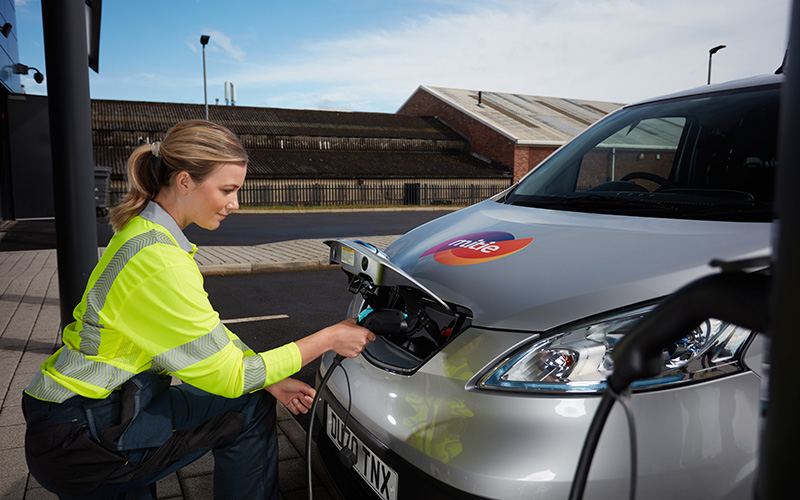What does decarbonisation actually cost?
Decarbonisation is a competitive necessity – but what does it really cost? And what’s the best way to get started? We’ve got the answers.
Let’s face it, despite the scientific case for net zero, some organisations still see decarbonisation as a less-than-urgent cost centre. But to have any hope of relevancy and profitability in the coming years, decarbonisation simply must happen.
Putting science aside, you only need to glance at the economic cost of inaction to understand why. Traditional energy prices and availability are volatile at best, regulatory bodies demand strategic action, and customers, investors and talent are all shifting favour towards more sustainable brands.
It’s less a question of whether you can afford to decarbonise, but whether you can afford not to. For the first blog in our Decarbonisation, Delivered series, we asked Alex Payne, Head of Energy Advisory at Mitie, to explain why net zero makes economic sense, what costs you need to consider and how to get started. This is what we learned.
Start early and involve the finance team
An effective net zero strategy requires investment. That much is unavoidable. But looking at it as a means to a more secure economic future is important. Sustainable technologies and solutions are currently more affordable than ever. And with the right projects, you can improve energy efficiency, resiliency and your reputation as a force for good.
“You may have committed to a 2050 target, but starting decarbonisation early is key, as it lets you set your own timescales and spread the cost of investment over time,” says Alex. “You don’t need to do everything at once. Instead, start small with quick wins that everyone can benefit from. This will also help you earn support from key stakeholders, including those in finance, who you’ll need to fight your corner.”
Having an executive sponsor can make all the difference in building support for net zero, as they can help rally support among the c-suite and wider organisation. While this could be the head of energy or engineering, finance leaders are particularly well suited to pushing decarbonisation.

“Finance is on the frontline when it comes to regulatory reporting, such as to the Task Force on Climate-related Financial Disclosures (TCFD),” says Alex. “The onus is falling on these teams to ensure ESG data is reported accurately and to help organisations follow a lucrative net zero roadmap to reduce costs and avoid penalties.”
For this reason, working with finance on decarbonisation is an ideal way to ensure your strategy is budgeted appropriately. For example, a project is far less likely to be cancelled at the final hurdle if the finance team was involved from day one.
But what data and costs will you need to look at to build that budget and identify those early quick wins?
Assess your estate and identify quick wins
To create a realistic net zero budget, you need to prepare thoroughly. This includes calculating the carbon footprint produced by your estate and all relevant activities. To get this right, you must look at your consumption data across gas, electricity, water, travel, waste recycling, your vehicle fleet and even your supply chain.
“Understanding your existing emissions and costs helps you identify where to prioritise improvements and what to do first,” says Alex. “You can also start looking at what you can realistically save and whether you need outside support, such as an end-to-end consulting partner.”
Alex also recommends factoring in how decarbonisation may impact your fuel contracts and supply chain relationships. In this context, your supply chain partners may also be looking at whether you’re making an effort to decarbonise.
“You need to consider the impact your projects will have on who you work with, what you buy, and who your suppliers will be going forward,” he says. “It’s a prime opportunity to take a step back and reassess your operational landscape and where – regardless of emissions – you need to improve. Plus, your supply chain partners are likely doing the same, so don’t give them a reason to reconsider your relationship.”
As important as assessing your existing emissions, costs and partnerships are to a successful strategy, you must also consider where the budget will come from.
Explore funding opportunities and start saving
In the UK, schemes like the Industry Energy Transformation Fund and the government’s Public Sector Decarbonisation Scheme offer decarbonisation funding for private and public sector organisations, respectively. The latter is set to provide £1.425 billion in grant funding over the financial years 2022-2023 and 2024-2025.
“There are plenty of government schemes available to help with upfront investments, and these can prove transformative,” says Alex. “But there are smart alternatives for projects that don’t require an upfront payment, like entering a power purchase agreement from a new renewable asset, or closer to home, a rooftop solar PV, or EV carport scheme on your own property. Don’t forget that power purchase agreements don’t necessarily have to be for assets that are on an organisation’s estate.”

Solutions like solar also put you in the position of generating your own energy, which has numerous benefits over relying on the grid. “I think it’s always better to generate your own energy if you can, whether you fund that yourself or pay a partner to deliver the solution for you, such as on-site PV panels,” says Alex. “An end-to-end partner can design, build and maintain the asset for you, and even monitor your power usage to identify opportunities to improve efficiency.”
Self-generation also opens up new revenue streams, such as being able to sell your excess power to neighbouring properties, or back to the grid. And because it’s coming from a localised grid, you avoid many of the costs associated with the supply of power that would usually be incurred when using the national grid.”
“Using data from your estate assessment, look for opportunities to reduce your energy consumption,” says Alex. “For example, LED lighting saves considerable energy, ground source heat pumps are more efficient and last longer than boilers, and transitioning to EVs can boost your brand and futureproof your fleet.”
Let’s get started
At Mitie, we can design, build and manage the bespoke decarbonisation solutions you need to bring your net zero strategies to life. We have also created a guide to overcoming the five biggest challenges to net zero, including building a credible business case for decarbonisation and unifying stakeholders.
How can we help?
If you’re looking for more information, need to talk to someone about an enquiry or want to chat about your service needs, then you’ve come to the right place.
Please fill in our short form and a member of our team will be in touch.
If you have a supplier enquiry, please visit our dedicated portal on www.mitiesuppliers.com
Get Decarbonisation, Delivered
Does your own net zero strategy need accelerating? We make decarbonisation of your built environment and fleet simple.
Through our Plan Zero approach, you’ll reduce your carbon emissions, save costs and secure your energy supply.